Hiyashi Chuka is a popular cold ramen dish of chilled noodles, shredded chicken, julienned cucumbers, and sliced tomatoes drizzled with my savory Sesame Miso Sauce. It’s a refreshing meal to enjoy during the hot summer months.
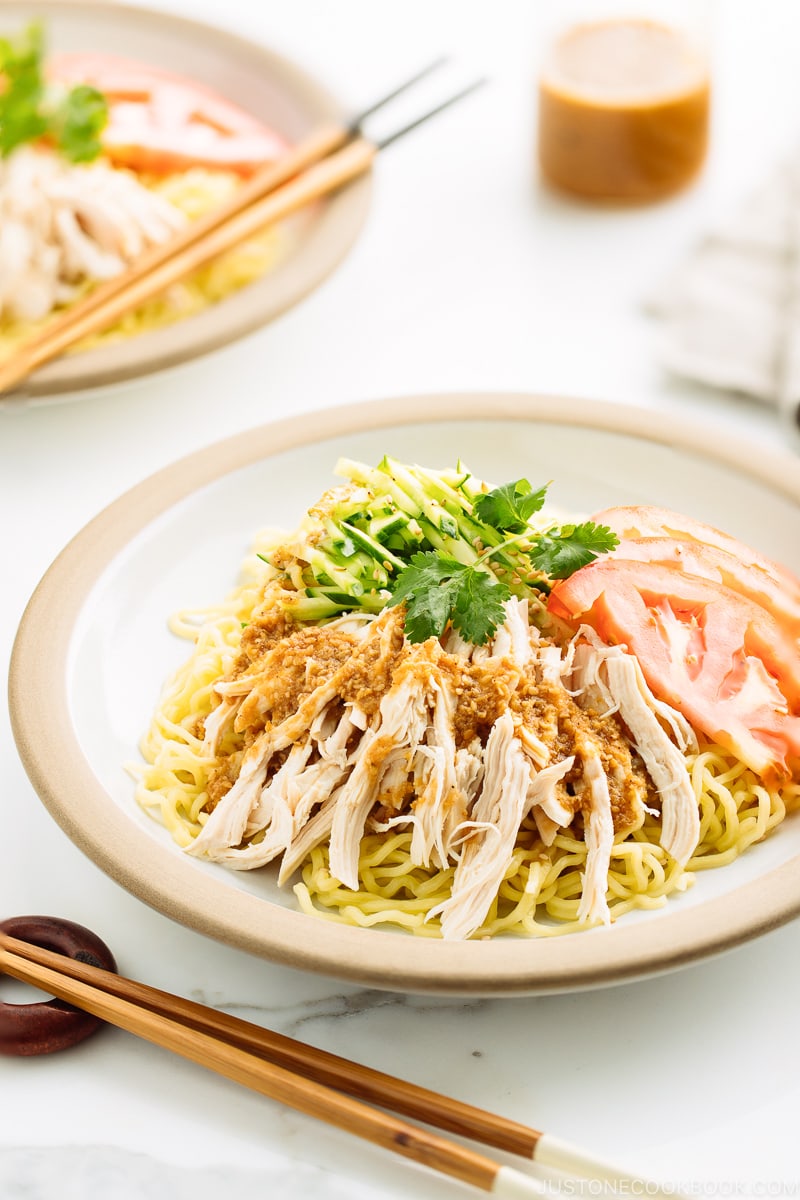
Aren’t noodles the best? They seem to have a special power of bringing appetites regardless of the season and the mood.
During the hot and humid summer months in Japan, when we feel too darn hot to eat, we turn to cold noodles as the most delicious remedy to beat the heat. There are endless options of cold noodles, but today I’m going to introduce one of the favorites – Hiyashi Chuka (冷やし中華), which literally means cold Chinese-style (Noodles). It starts with chewy egg noodles, a mix of refreshing and crunchy toppings like shredded chicken, cucumber, and slices of tomato, all blanketed in a savory nutty sauce. Slurping down the chilled noodles, you will instantly feel cool and find your appetite and spirit back.
On Just One Cookbook, you can find the classic Hiyashi Chuka recipe with soy sauce-base sauce, and this version is with a sesame miso sauce.
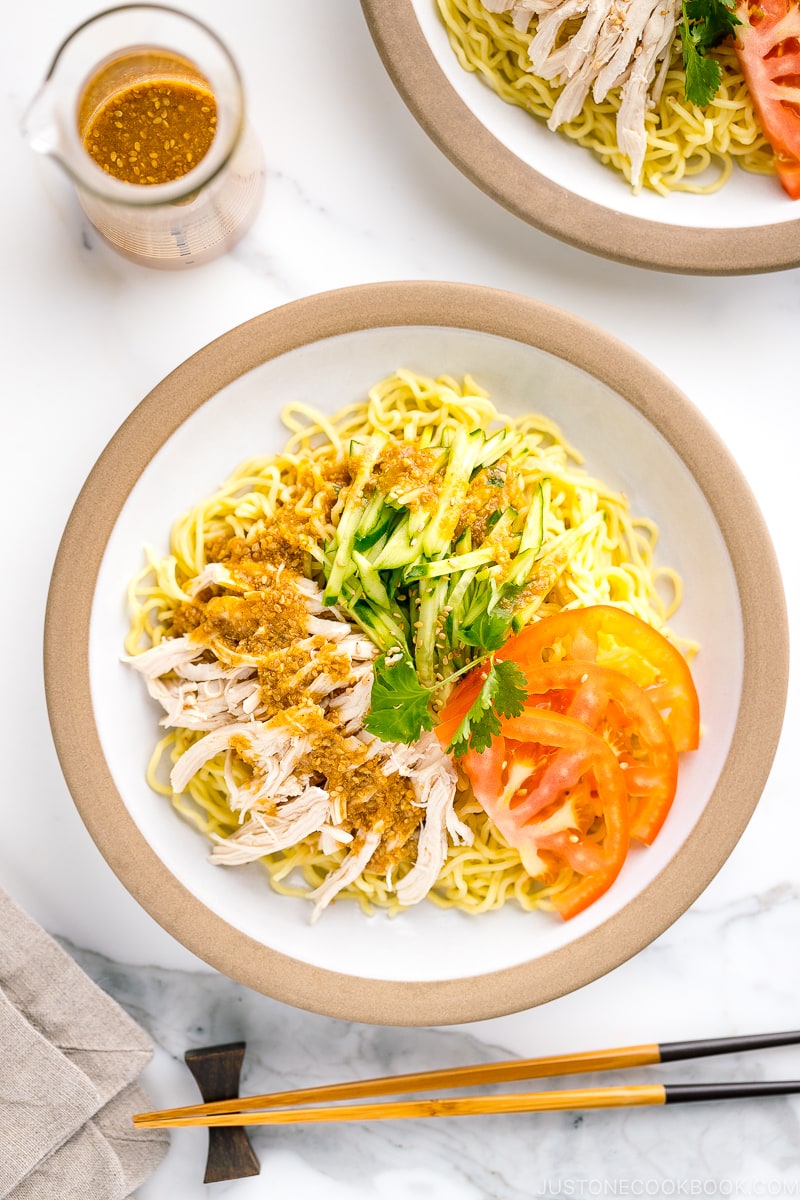
What’s Hiyashi Chuka?
Despite the popularity of ramen all over the US and around the world, cold ramen is still not too familiar among many Japanese food lovers. As Japan’s summer is pretty brutal with heat and humidity, most people long for chilled/cold noodle dish rather than ramen noodles in piping hot broth.
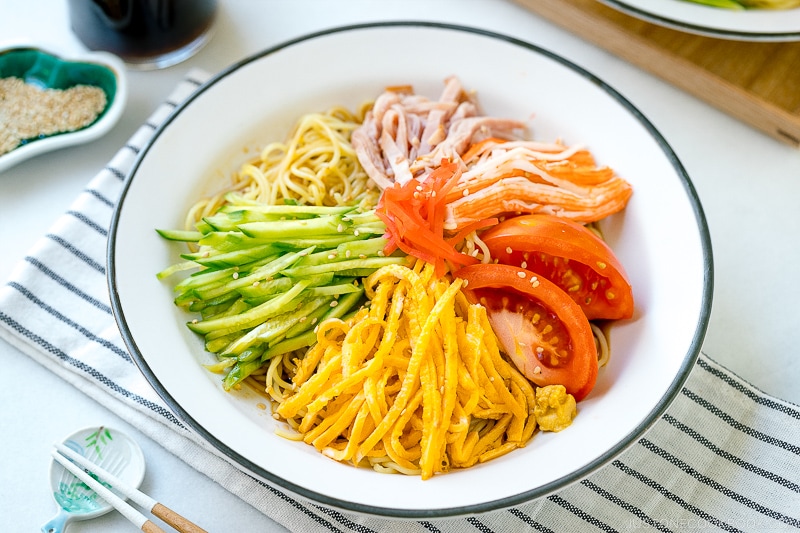
Hiyashi Chuka is served with cold ramen noodles placed on a plate with a rim (not a bowl), each group of toppings is placed radially (clockwise/counter-clockwise), like a pie chart. Then the sauce is poured over before it is served.
The store-bought Hiyashi Chuka package often comes with the sauce, but it includes MSG and preservatives. For a healthier option, you can easily make my soy sauce-based sauce shared in my other Hiyashi Chuka recipe or make this sesame miso sauce in today’s recipe.
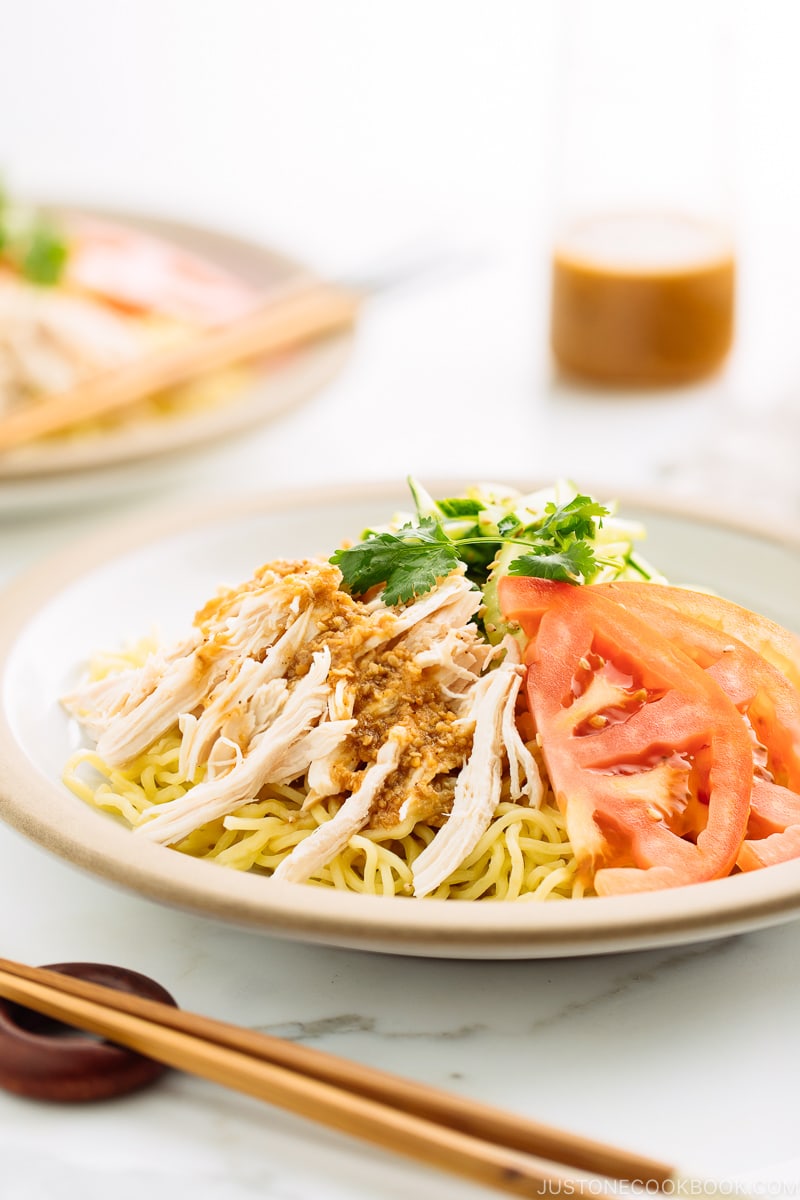
The sesame miso sauce is a simple mix of sesame seeds, miso, soy sauce, rice vinegar, sugar, sesame oil, and chicken stock. The sauce itself is light yet it delivers a dynamic punch of flavor – thanks to the umami-rich miso.
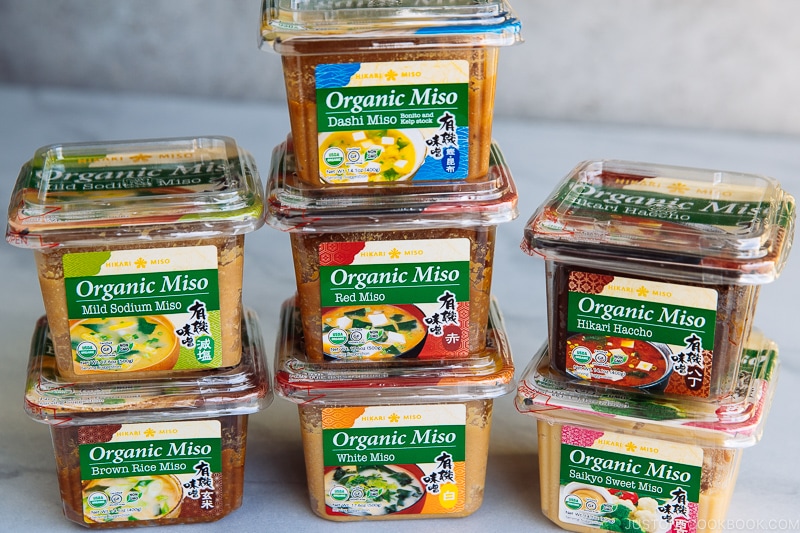
For this recipe, I used Hikari Miso® Organic Miso – Red Miso, but you can use other types of miso to try out different flavors. It is my favorite brand of miso. If you’re interested to try it out, you can purchase Hikari Miso from a majority of Japanese/Asian grocery stores or on Amazon.
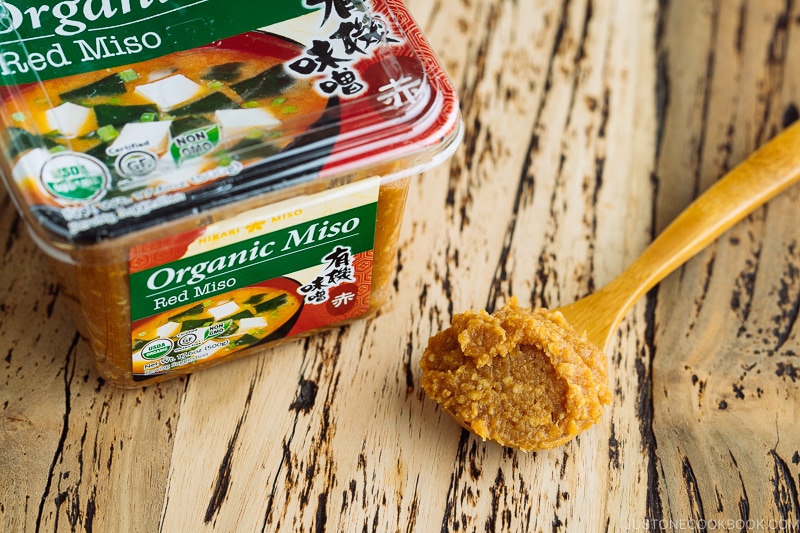
Make It Vegetarian/Vegan-Friendly
To make a vegetarian or vegan sauce, you can use kombu dashi or vegetable stock to replace the chicken stock.
For toppings, instead of chicken breast, you can use firm tofu that you bake/fry, aburaage (deep-fried tofu pouch), or various grilled vegetables to satisfy your cravings.
No matter what toppings you use, hiyashi chuka is quick to throw together. So ramen lovers, let’s bring on the noodles greatness this summer!
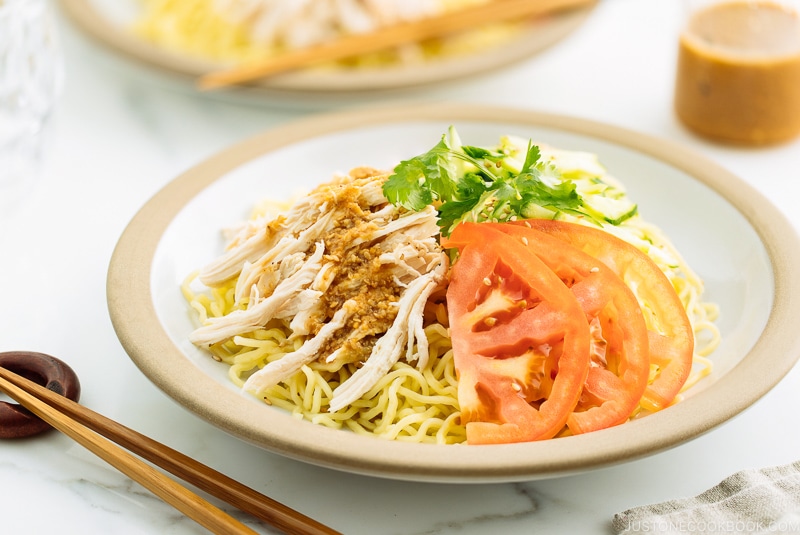
Wish to learn more about Japanese cooking? Sign up for our free newsletter to receive cooking tips & recipe updates! And stay in touch with me on Facebook, Pinterest, YouTube, and Instagram.
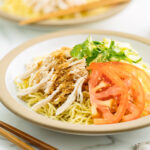
Hiyashi Chuka with Sesame Miso Sauce
Ingredients
- 1 knob ginger (1 inch, 2.5 cm)
- 2 green onions/scallions
- 4 cups water (about the temperature of cold tap water, for poaching the chicken)
- ½ lb chicken breast (I used half a chicken breast)
- 2 Tbsp sake
- 1 tsp Diamond Crystal kosher salt
- 1 Japanese or Persian cucumber
- 1 tomato
- 1 sprig cilantro (coriander) (for garnish)
- 2 servings hiyashi chuka noodles (5–6 oz or 141–170 g of fresh ramen noodles per serving)
For the Sesame Miso Sauce
- 2 Tbsp toasted white sesame seeds (and more for garnish)
- 2 Tbsp miso (I used Hikari Miso® Organic Red Miso)
- 1 Tbsp soy sauce
- 1½ Tbsp rice vinegar (unseasoned) (you can use lemon juice instead)
- 2 Tbsp sugar
- 1 tsp toasted sesame oil
- ⅓ cup chicken stock/broth (I used the flavorful stock I made from poaching the chicken)
Instructions
- Gather all the ingredients.
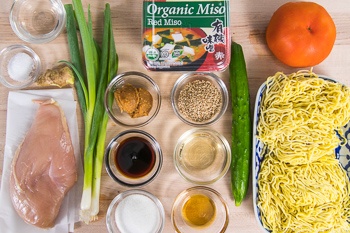
To Poach the Chicken
- Slice 1 knob ginger into thin slabs and cut 2 green onions/scallions into 2-inch (5-cm) pieces.
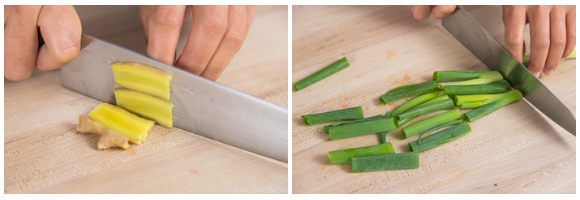
- To a pot, add 4 cups water and ½ lb chicken breast.
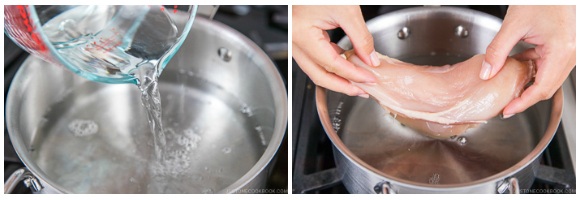
- Next, add the sliced ginger and green onions to the pot. Finally, add 2 Tbsp sake and 1 tsp Diamond Crystal kosher salt.
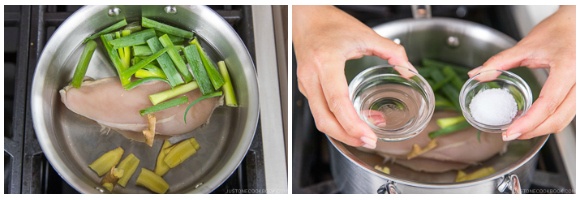
- Bring the pot of water and chicken to a boil over medium heat. Once boiling, skim off the foam and scum.
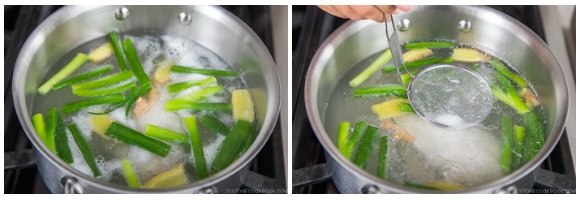
- Now, lower the heat to low and cover the pot with the lid slightly ajar. Gently cook the chicken for 15 minutes.
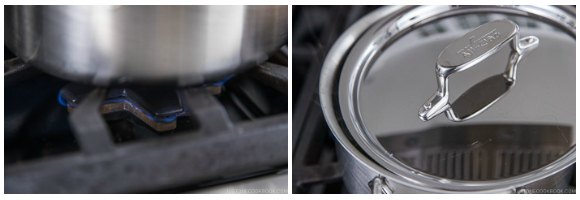
To Prepare the Toppings
- In the meantime, peel the skin of 1 Japanese or Persian cucumber in stripes by alternating peeled and unpeeled strips down the length of the cucumber. Slice the cucumber thinly.
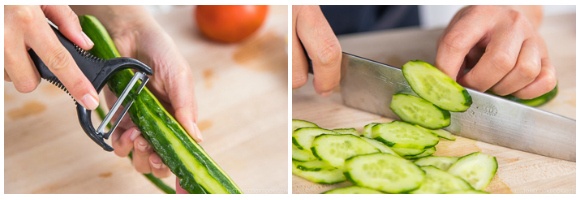
- Cut the sliced cucumber into julienned strips. Cut 1 tomato in half and thinly slice the halves. Transfer them to a plate.
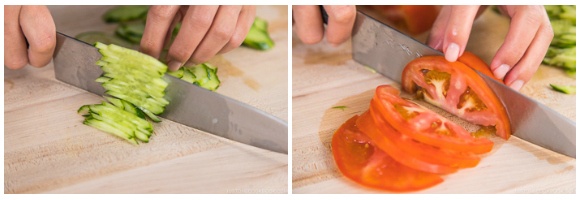
To Make the Sesame Miso Sauce
- Grind 2 Tbsp toasted white sesame seeds with a mortar and pestle. Set aside.
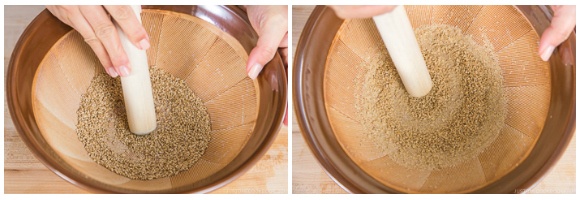
- In a bowl or liquid measuring cup, combine 2 Tbsp miso, 1 Tbsp soy sauce, 1½ Tbsp rice vinegar (unseasoned), and 2 Tbsp sugar.
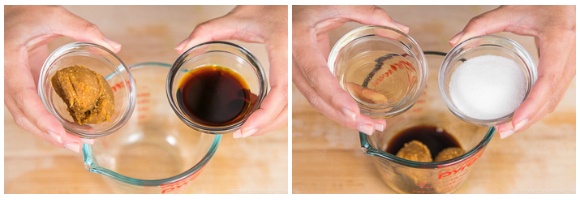
- Add the ground sesame seeds and 1 tsp toasted sesame oil to the bowl. Mix it all together until smooth.

- After 15 minutes of cooking the chicken, the poaching liquid is now a flavorful chicken stock. Reserve ⅓ cup chicken stock/broth and gradually stir it into the sauce ingredients until well combined. Set aside.

To Shred the Chicken
- Remove the chicken breast from the pot and shred it using two forks. Transfer it to the plate with the cucumber and tomato.
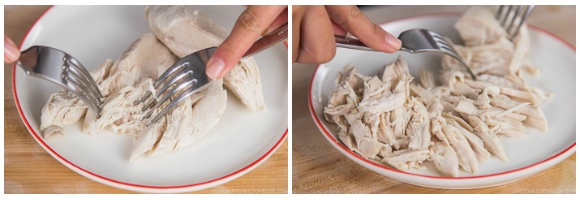
To Cook the Noodles
- Bring a pot of water to a boil. With your fingers, loosen and separate 2 servings hiyashi chuka noodles and add them to the boiling water.
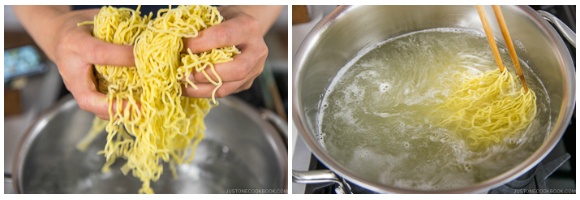
- Cook according to the package instructions. When done, remove the noodles from the pot and plunge them into a bowl of iced water. This stops the cooking and chills the noodles.
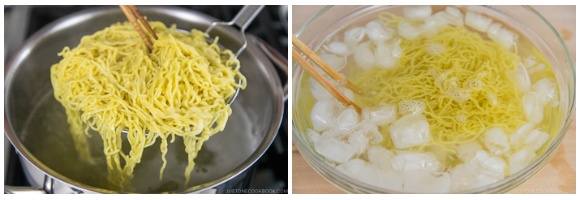
To Serve
- Drain the chilled noodles well and serve them on individual plates. Place the toppings on the noodles and sprinkle with extra sesame seeds. Garnish with 1 sprig cilantro (coriander) (optional) and drizzle with the Sesame Miso Sauce before serving.
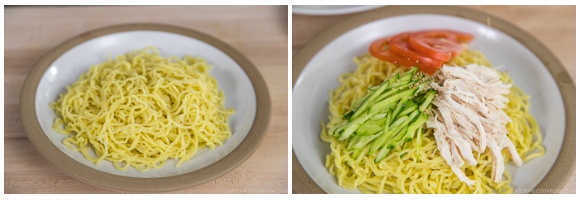
To Store
- You can keep the sauce and toppings in airtight containers separately, but I recommend preparing the noodles right before you serve. Store in the refrigerator for 3 days and in the freezer for a month.
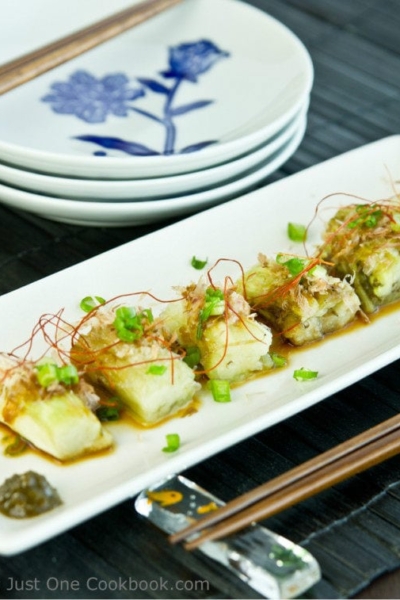
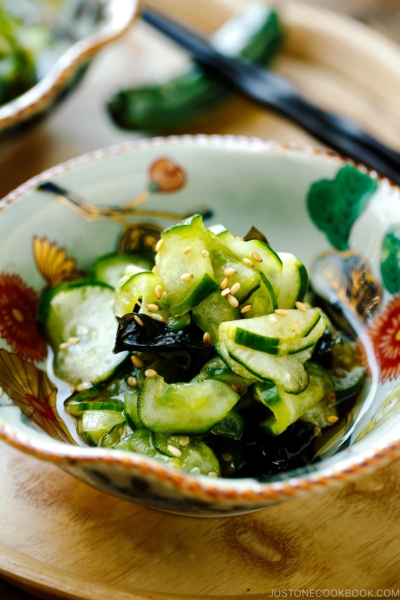
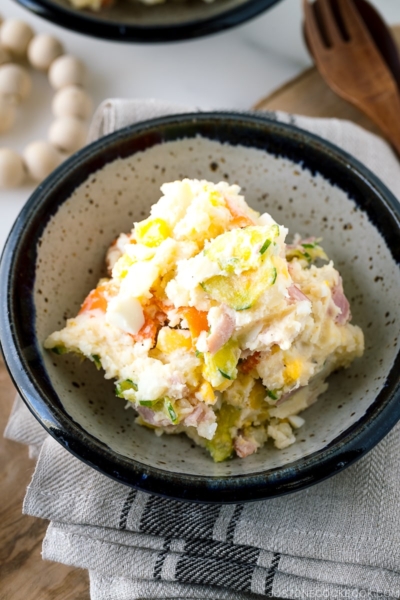
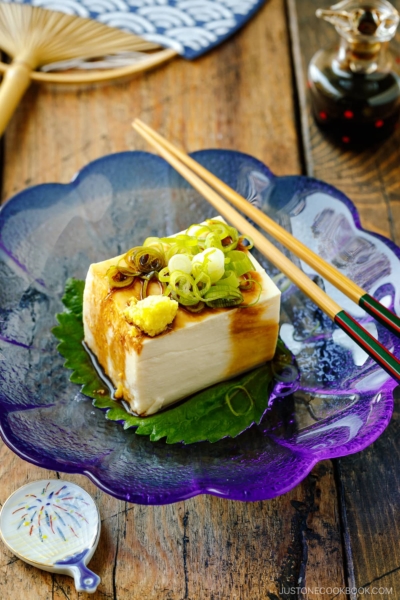




I only had udon, but can’t wait to try this! Thank you, Nami-san ❤️ Also the amount for the portion of noodles would be the same for dry noodles too?
Hello, Samantha. Thank you for trying Nami’s recipe.
If you’re using dry noodles, we recommend about 80 g per serving.
We hope you enjoy this dish!
It s a delicious meal for hot days.
Hi, Tatiana! Awesome! Thank you very much for trying Nami’s recipe!
I made this with udon noodles because I only had time to go to a pretty basic grocery store, not one with real ramen, and it was still delicious. I was certainly tempted to use basic chicken broth instead of the poaching liquid, but I’m glad I made the broth as directed.
Hi, Sadye! We are so happy to hear you enjoyed the dish!
Thank you for reading Nami’s post and sharing your experiences with us.
Happy cooking! 🤗
Just made my first Hiyashi Chuka of the season. Always come back to your recipe! Thank you for sharing it with the world!!! One of my cohorts and I will enjoy this today!
Hi Chuck! Aww. We are so happy to hear that you enjoy Nami’s recipes.
Thank you so much for trying this dish and for your kind feedback. Happy Cooking!
Just wanted to say how much I absolutely love your recipes – I’ve been using them for about two years and it has inspired me to learn to cook Japanese more for me and for my partner (so many of these, especially the cold noodle recipes, are ideal for a poor couple on a summer night). Really appreciate you!! Thank you!
Hi Salina! Thank you for your kind feedback!
Nami and JOC team are so happy to hear you enjoy many recipes from our site.
We hope you continue to explore many dishes. Happy Cooking!💞
Omg!!!! Oishiii, thanks for this recipe I found it yesterday and made it tonight. Perfect for this hot hot day. Arigatou😊
Hi Kochan! Aww. We are so happy to hear Oishii! Yes! This is a perfect dish for a hot hot day!
Thank you very much for trying Nami’s recipe and for your kind feedback.😊
Umai ! This takes me back to scorching summers living in central Tokyo! No escape from the humidity, except with very cold iced tea and soups. Am living in BuenosAires now which gets super humid too, so this is gonna become a staple again. I already make Zara soba often but it doesn’t chill down quite the same way, although I prefers the texture of cold soba noodles. Also, a sprinkling of baking powder on miso elevatess the flavour incredibly!! Tip from my Japanese buddy!
Hi Adam! Thank you very much for reading Nami’s post and for your kind feedback!
We hope you enjoy Hiyashi Chuka!🙂
Thank you so much for this recipe. In Florida where I live summer can be pretty brutal too, so cold noodles sound great. I came across Morioka Reimen recently and would love to find a recipe for it. I didn’t see that you had posted about this cold ramen with fruit and was hoping you might consider posting about it this summer…..
Hi Anthony! Thank you very much for reading Nami’s post!
We are glad to hear you enjoy cold noodles! Thank you for your request!